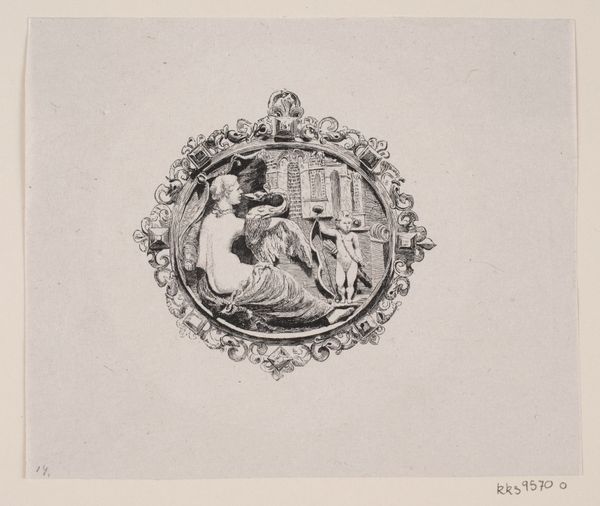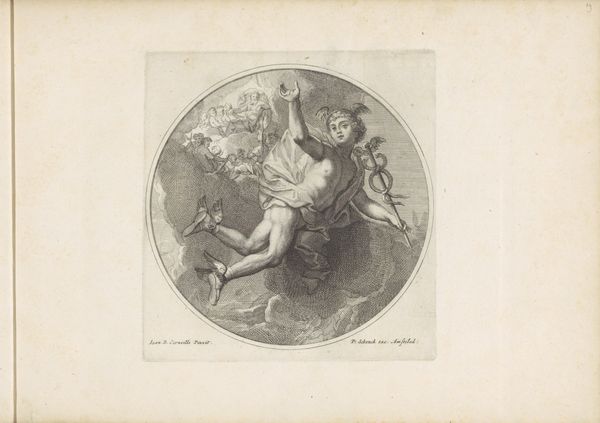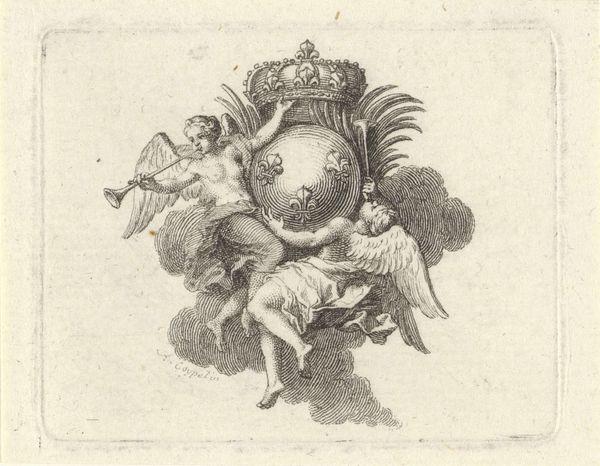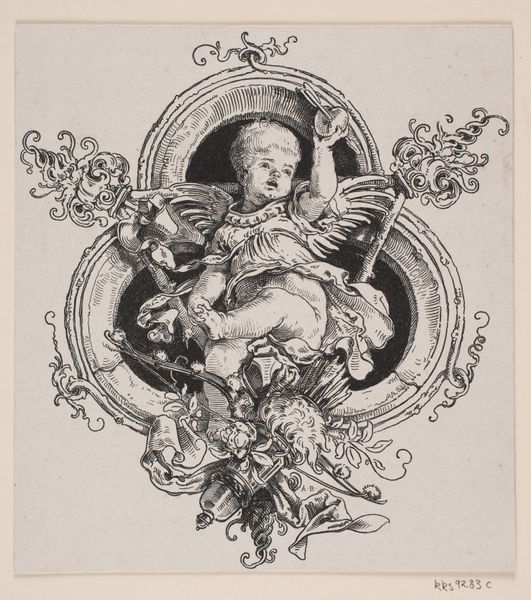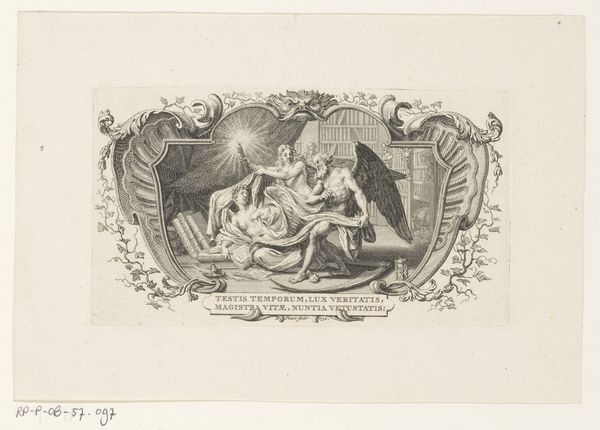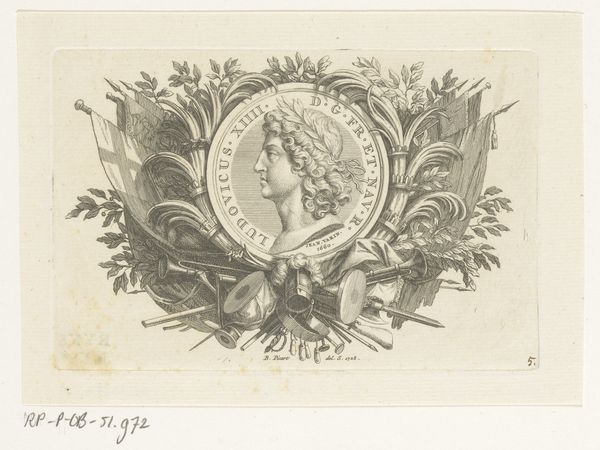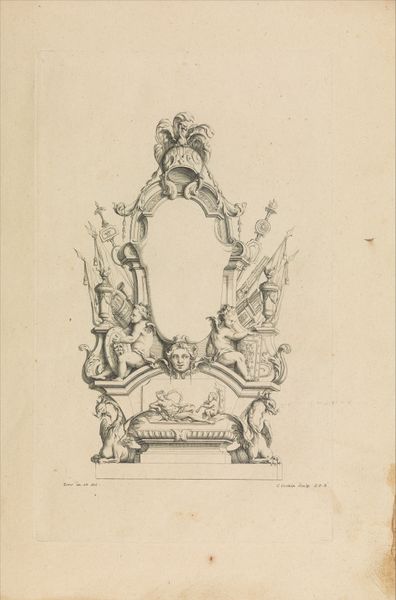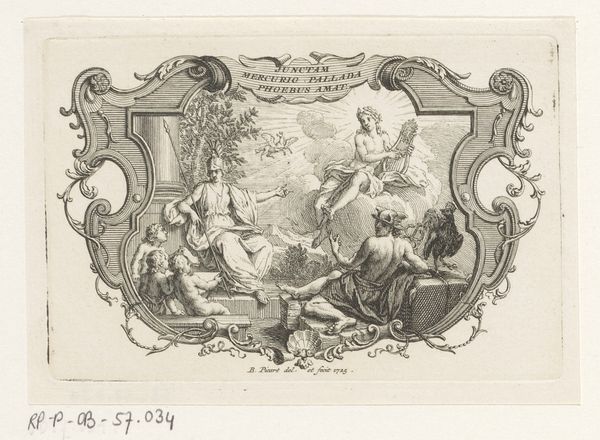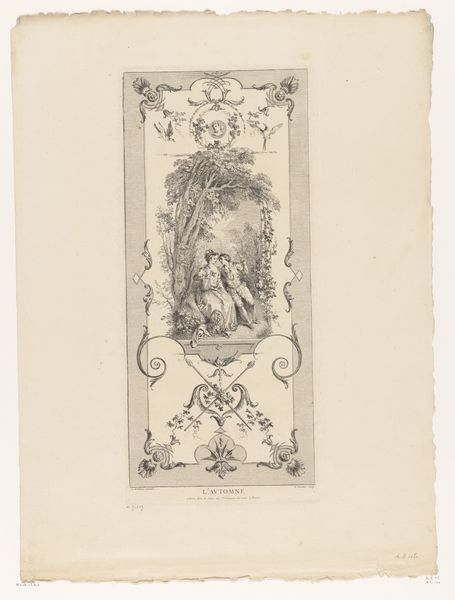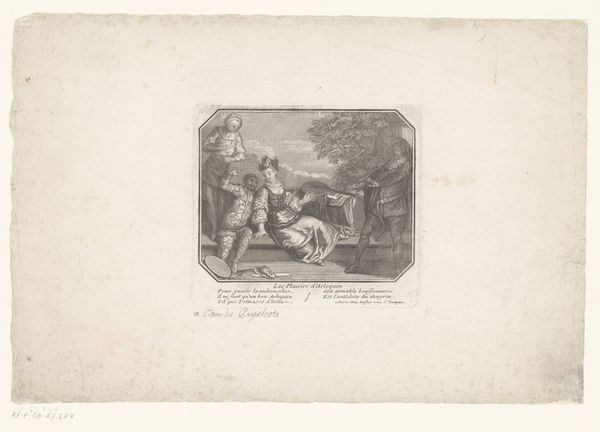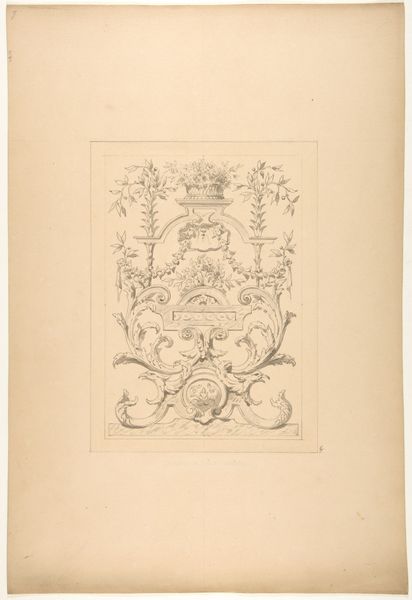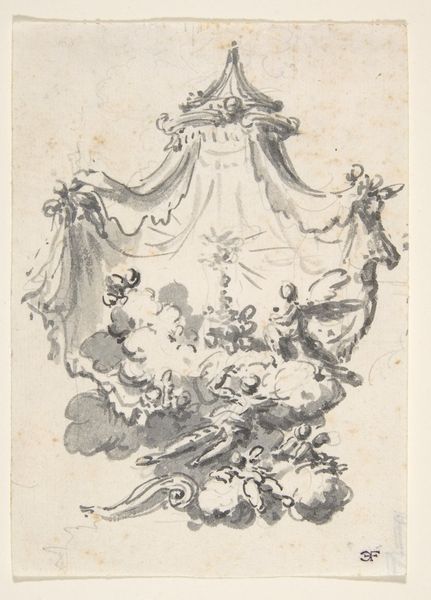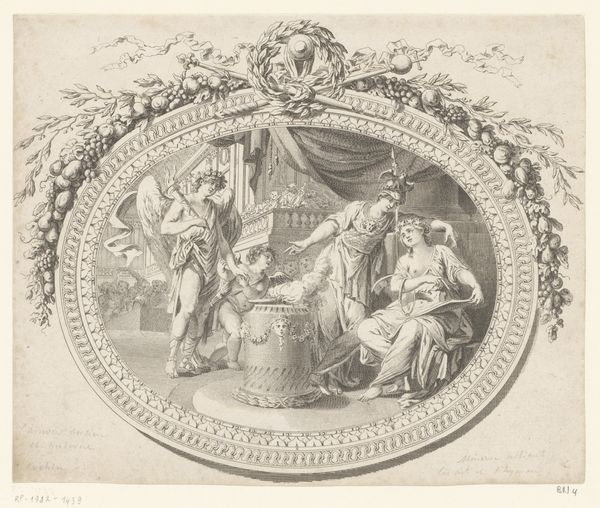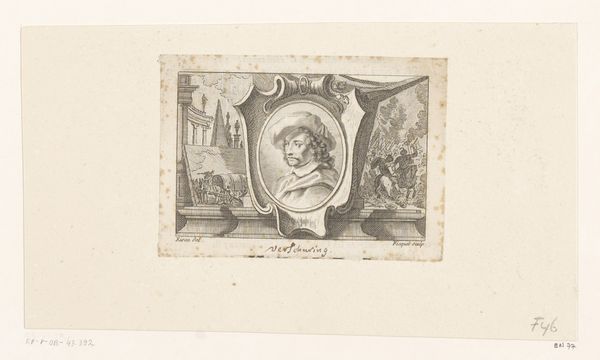
Dimensions: height 425 mm, width 557 mm
Copyright: Rijks Museum: Open Domain
This is a drawing by A. Galliard depicting a clock with a putto painting a portrait of a lady. The cherubic figure, a motif that stretches back to classical antiquity, embodies a timeless connection between love, art, and creation. The putto, often associated with Cupid or Eros, has roots in ancient Roman art, where such figures symbolized love and desire. Here, we find this figure not only in a sensual context, but also engaged in artistic creation. It's a visual echo of the Renaissance, where putti were frequently used in religious paintings, evolving from pagan to Christian symbolism. The act of painting itself is a powerful motif. This connects the artwork with a long tradition of portraying artists as divinely inspired beings. This image is engaging because it invites us to ponder the cyclical nature of love and art—how they continuously resurface, transform, and gain new relevance across different epochs, reflecting our collective subconscious.
Comments
No comments
Be the first to comment and join the conversation on the ultimate creative platform.
